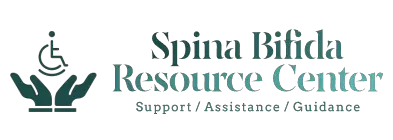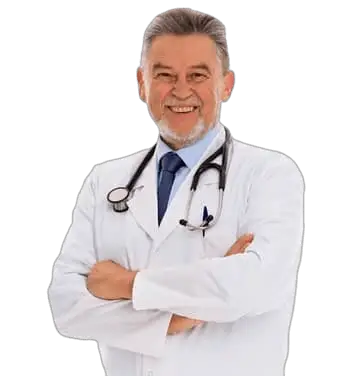Guide on Mild Spina Bifida Occulta s1 (FAQ, Symptoms & Treatment)
This page contains the most popular questions people have about a type of SB, Mild Spina Bifida Occulta s1. You can find answers to the most popular questions on this page, such as the most well-known facts on Mild Spina Bifida Occulta s1.
Occulta s1 is one of the three types of Spina Bifida (SB). Unlike the two visible types of SB, Myelomeningocele and Meningocele, Occulta is a hidden type of SB. Compared to the two forms of SB, Occulta is well-known worldwide as the mildest form of this birth defect that usually involves the L5 to S1 area of the spinal cord.
What does spina bifida occulta of s1 mean?
Spina Bifida Occulta of s1 means “hidden” or “closed” spina bifida, as this birth defect is in the form of a small gap in the patient’s spine that prevents the vertebrae from forming properly. It is known as the “hidden” type of this condition, as there is no opening in the back and no visible protruding sac on the patient’s spine. [1]
Spina Bifida Occulta of s1 is when the hernia lesion is covered by the skin. In most cases of SB Occulta s1, the patients don’t have any disabilities since the spinal cord and nerves are usually normal in this type of SB.
What are mild spina bifida occulta symptoms?
Mild Spina Bifida Occulta S1 symptoms are usually non-existent as in mild cases, there may not be complications or functional disability. People with no mild sb occulta s1 symptoms or complications do not require treatment or surgery. [2]
People with mild sb occulta s1 are not usually aware they have the condition. As they age and grow older, they start to notice certain changes in their function that might be due to SB occulta.
In other cases, patients can suffer from back pain, constipation, urinary problems, and spondylolysis. Patients with extensive SB can suffer from a foot deformity, leg weakness, numbness, clumsiness, and hand weakness or numbness. [3]
What is mild spina bifida occulta s1 in adults?
Mild Spina Bifida Occulta S1 in adults is a non-visible birth defect that sometimes goes undetected in adults who are born with this type of condition. This birth defect is often discovered in patients when they go for a back or spine x-ray due to unrelated pain or an injury. [4]
Based on a recent SB report in the U.S., it has been discovered that 15 percent of healthy people have been living with occulta without knowing about it. It has also been discovered that a smaller number of people with sb occulta s1 suffer from pain and neurological issues, such as tethered spinal cord which is not an untreatable SB complication as it can be surgically corrected. [5]
A video of a personal experience on an adult with SBO and experience of getting spinal injections to help ease pain.
What is mild spina bifida occulta s1 in babies?
Mild Spina Bifida Occulta S1 in babies is caused by a combination of genetics, environmental factors, and nutritional deficiency. It has been reported that mild sb occulta S1 in unborn babies can also be caused by air pollution and smoking. Screening tests showed that the most common cause of infants born with this birth defect is folate deficiency in pregnant mothers.
When pregnant mothers don’t get enough vitamin folic acid in their diet, their unborn babies might develop this birth defect from the womb. Since 1998, to prevent this issue from occurring, the U.S. Food and Drug Administration has made it compulsory for every cereal, bread, and pasta brand to be fortified with folic acid. Reportedly, this step from the FDA prevents around 1,300 babies from being born with this birth defect every year. [6]
Mild Spina Bifida Occulta S1 in babies may not have any visible marks. In other cases, babies with spina may have a dimple, birthmark, or a hairy patch over the affected area.
Does spina bifida occulta s1 need treatment?
Spina Bifida Occulta S1 may not require any treatment at all. In some patients, this condition may be connected to a previous injury or disease, although it has been reported that the majority of the lesions pose no clinical threat. Patients with painful symptoms may undergo physical therapy or surgery to repair any damage caused by this spinal defect [7].
Patients with spina bifida occulta S1 who suffer from progressive neurologic deficit may require surgery by a pediatric neurosurgeon to prevent neurologic deterioration. Patients who suffer from irregular bowel movements can use the electrical stimulation combined with individualized biofeedback treatment to improve the symptoms.
Can mild spina bifida occulta s1 cause problems later in life?
Mild Spina Bifida Occulta S1 may not cause problems later in life. Based on studies, children with this birth defect may suffer from constipation. In most cases, this condition is asymptomatic and does not cause any major disruptions or problems to the daily lives of people with this birth defect though other than loss of muscle, there have been cases where patients have been found to suffer from sleep apnea. [8]
Studies on spina bifida occulta S1 have linked this birth defect to a number of anomalies and clinical syndromes, such as tethered cord, intraspinal lipoma, increased incidence of disc pathology, genitourinary dysfunction, foot deformities, syringomyelia, and lumbar spondylolysis.
Does mild spina bifida occulta s1 get worse with age?
Mild Spina Bifida Occulta S1 can get worse with age but it does not severely affect the lives of people with this type of birth defect. Based on a study, patients with this condition can suffer from posterior disc herniation as they grow older due to the instability of the base of the lumbar spine. [9]
There can be neurological complications that are associated with mild spina bifida occulta s1, such as pain in the back or legs, weakness in the legs, deformed legs, feet, and back, changes in bladder or bowel function, and numbness or other changes in the legs or back.
What organs does mild spina bifida occulta s1 affect?
Mild Spina Bifida Occulta S1 can affect organs like the bladder and bowel. Recent medical studies have shown that older children with urinary problems and constipation, and adults with spondylolysis have this type of birth defect. [10]
Is mild spina bifida occulta s1 painful?
Mild Spina Bifida Occulta S1 is not painful as in most cases, it is asymptomatic and most patients don’t realize they are living with this birth defect until they go for a spine or back x-ray or suffer an injury in that area on the spine.
In rare situations, mild spina bifida occulta S1 can be painful if the birth defect is more extensive, such as if it involves more than just one bone.
Must watch Video of mother giving a personal account about her 8 yearold and the pain he feels with SBO.
What are mild spina bifida occulta s1 treatments?
Mild Spina Bifida Occulta S1 treatments depend on the symptoms. If it causes tethered spinal cord, surgery is recommended to release the tether. Majority of patients who undergo surgery by a pediatric orthopedic surgeon to treat occulta recover well with some even improving their level of function. [11]
These are the most popular questions on Mild Spina Bifida Occulta s1 that have been asked recently online. If something is missing here or any questions you may have about Mild SB Occulta s1, do not hesitate to contact us.
References:
- SB : Causes, symptoms, diagnosis and treatment. (n.d.). Retrieved June 2, 2022, from https://www.spineuniverse.com/conditions/spinal-disorders/spina-bifida/spina-bifida-causes-symptoms-diagnosis-treatment
- Tamas-Csaba, S., Lorand, D., Klara, B., Sebastian, S. R., Gergo, R., & Zsuzsanna, P. (2019). Study of SB occulta based on age, sex and localization. ARS Medica Tomitana ,25 (3), 95–99. https://doi.org/10.2478/arsm-2019-0020
- Gregerson DM. Clinical consequences of SB occulta. J Manipulative Physiol Ther. 1997 Oct;20(8):546-50. PMID: 9345683.
- Yuan Z, Cheng W, Hou A, Wang W, Zhang S, Liu D, Gao F, Li H, Wang W. Constipation is associated with SB occulta in children. Clin Gastroenterol Hepatol. 2008 Dec;6(12):1348-53. doi: 10.1016/j.cgh.2008.07.009. PMID: 19081525.
- SB occulta. MyDr.com.au. (2021, February 14). Retrieved June 2, 2022, from https://www.mydr.com.au/spina-bifida-occulta/
- SB occulta. Columbia Neurosurgery in New York City. (2021, July 21). Retrieved June 2, 2022, from https://www.neurosurgery.columbia.edu/patient-care/conditions/spina-bifida-occulta
- SB. SB- an overview | ScienceDirect Topics. (n.d.). Retrieved June 2, 2022, from https://www.sciencedirect.com/topics/neuroscience/spina-bifida
- Default – Stanford Children’s health. Stanford Children’s Health – Lucile Packard Children’s Hospital Stanford. (n.d.). Retrieved June 2, 2022, from https://www.stanfordchildrens.org/en/topic/default?id=spina-bifida-90-P02415
- SB. Reeve Foundation. (n.d.). Retrieved June 2, 2022, from https://www.christopherreeve.org/living-with-paralysis/health/causes-of-paralysis/spina-bifida
- Disability benefits for SB. LawMed-Disability Attorneys, LLP. (n.d.). Retrieved June 2, 2022, from https://www.ocdisabilityattorneys.com/disability-benefits-for-spina-bifida
- SB occulta. SB Association. (2021, January 21). Retrieved June 2, 2022, from https://www.spinabifidaassociation.org/resource/occulta/
Related Articles:
- Cost of Treatments for Spina Bifida (incl Utero, Surgery, Therapy, etc)
- 10 Ways to manage Spina Bifida Back Pain



